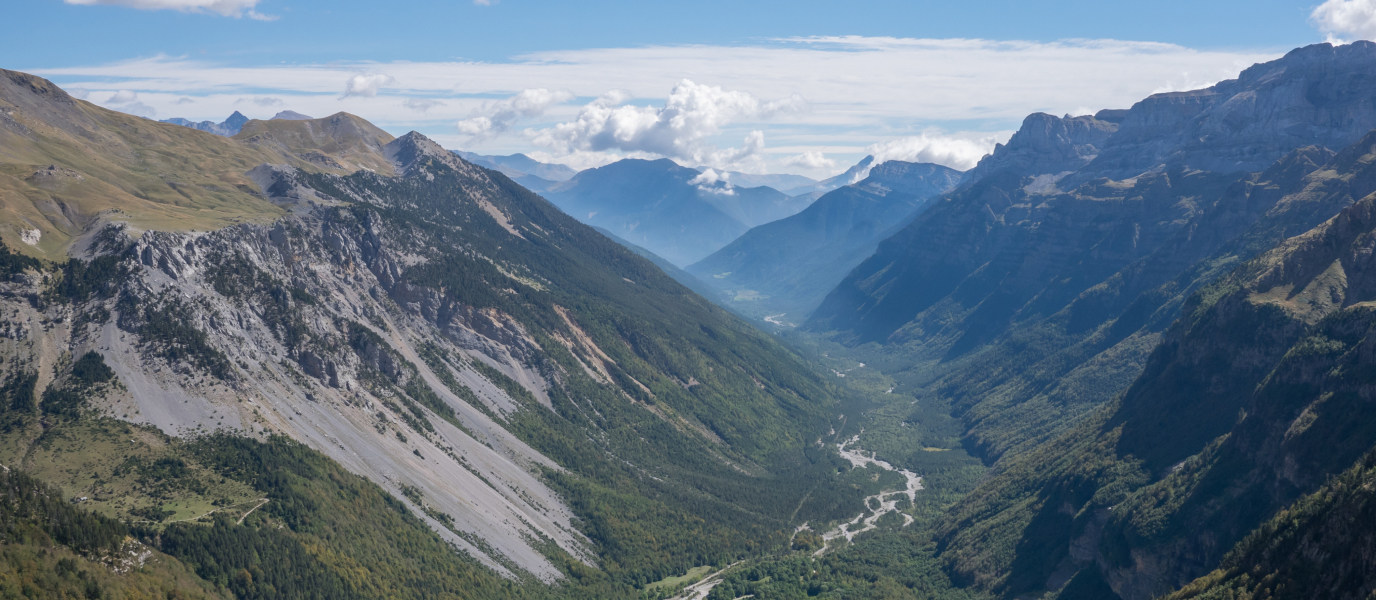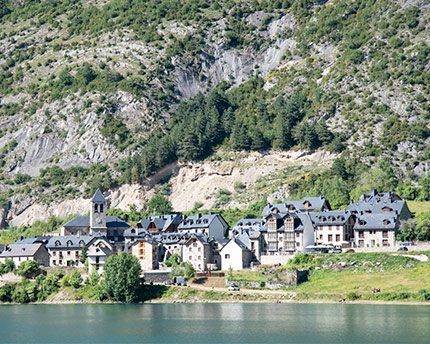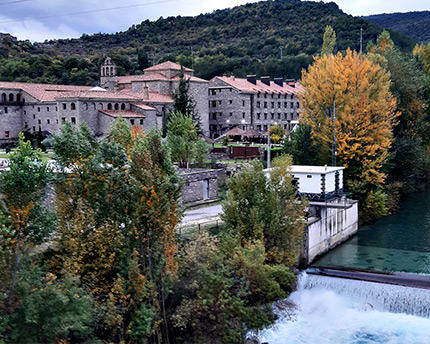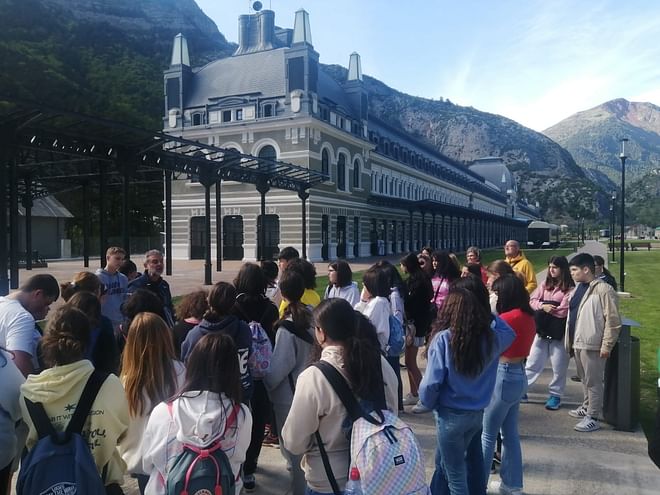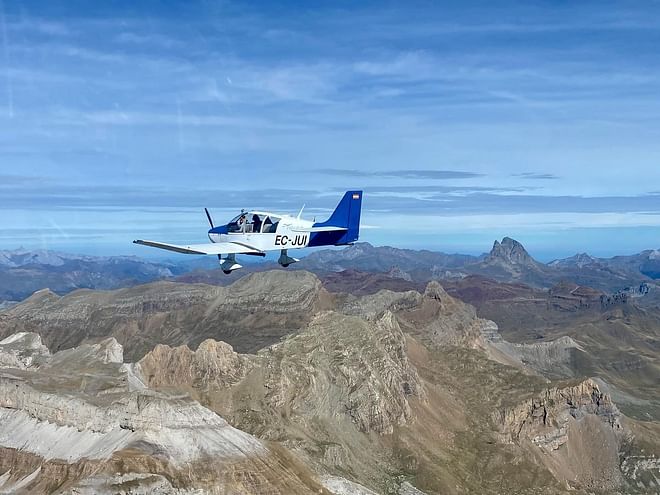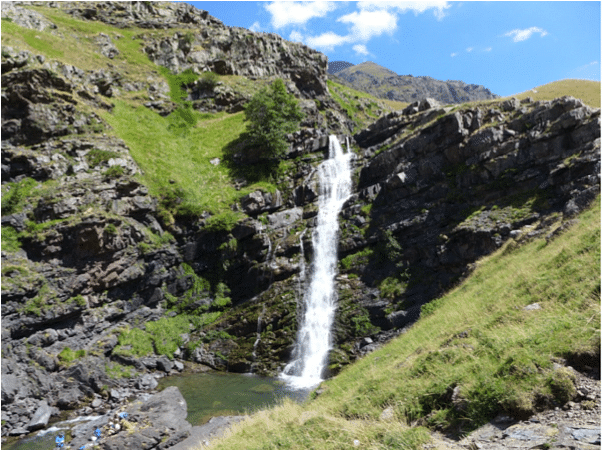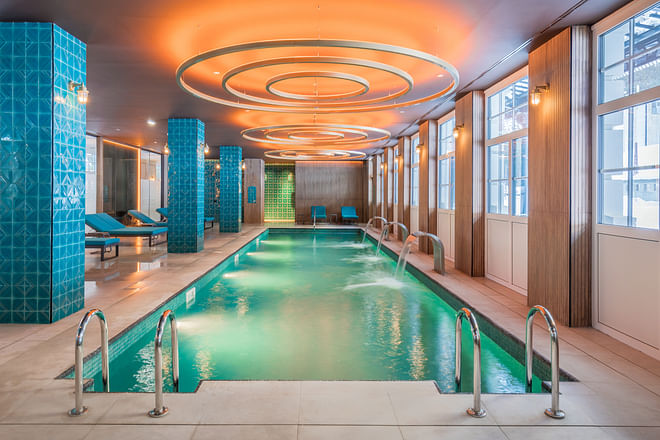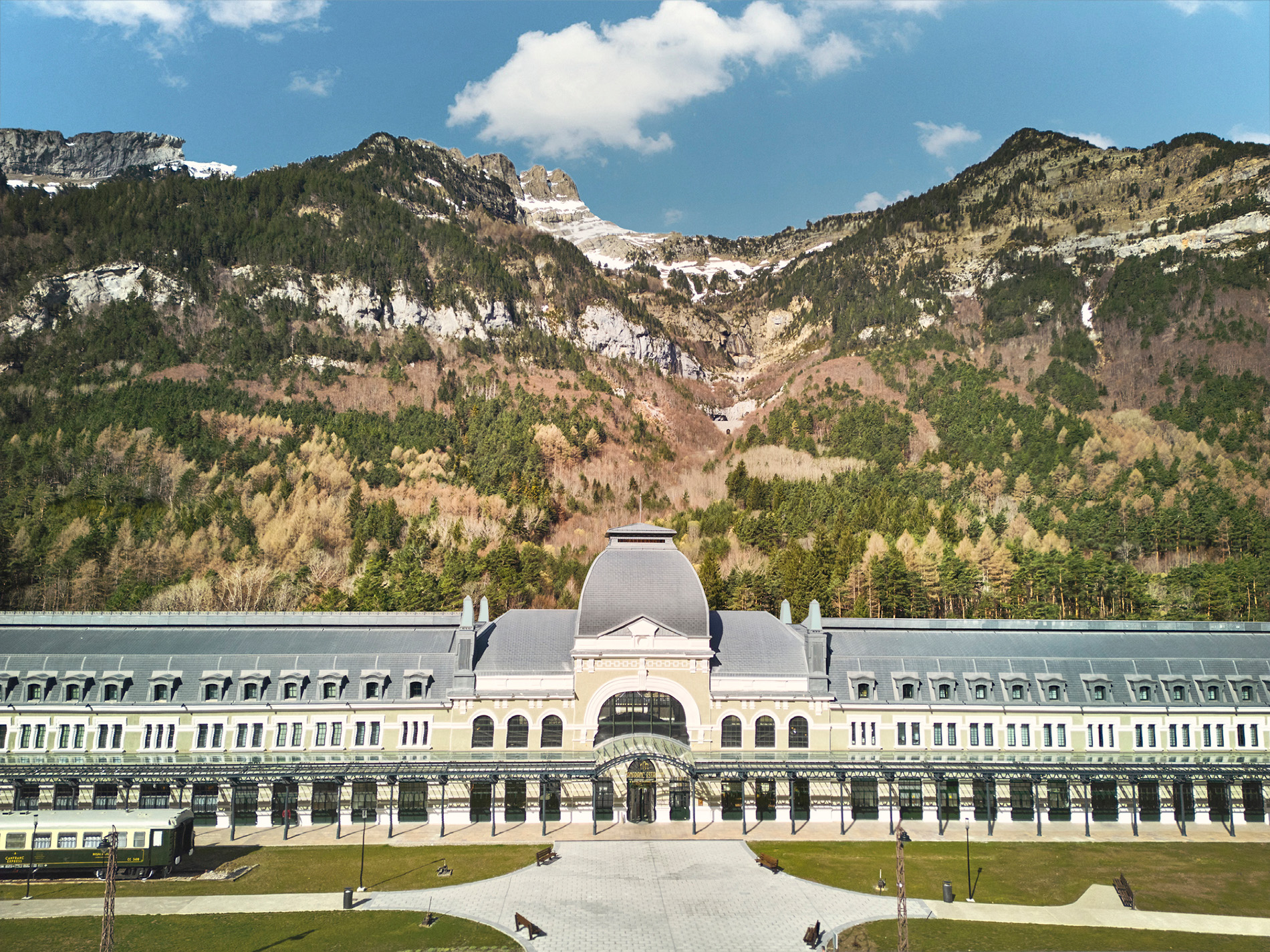The Guara Sierra and Canyons Nature Reserve is a paradise for nature lovers, especially those who love hiking among rugged mountains and crystal clear rivers. Hiking trails of varying difficulties, beautiful villages in breathtaking valleys and ravines for adventurers; here are some ideas on how to make the most of your visit to one of the loveliest nature reserves in north-eastern Spain.
Things to see in Guara Sierra
Alquézar
Alquézar is clearly one of the most beautiful villages in Huesca province. Located in a limestone area, next to the river Vero, it is a medieval village of over 1,000 years. Its origin is Arab: the first settlement in the area was built by the lieutenant Khalaf ibn Rashid in the 9th century, in a tumultuous period, with confrontations with the Christian kingdoms, something which can be seen in its defensive layout.
The most outstanding building in Alquézar is clearly its Romanesque collegiate church, which was built over a Muslim castle after the conquest by the Kingdom of Aragon. The building we can visit today is mostly from the 16th and 17th centuries.
Nevertheless, the best thing about Alquézar is to lose yourself in its cobbled streets and enjoy its harmonious setting. The square on Calle Nueva is a good place to make a stop since this is where most of the bars and restaurants are located. At sunset, you can end the day by visiting the Sonrisa del Viento viewpoint, where there is a contemporary art sculpture and from where you can enjoy the best views of the village.
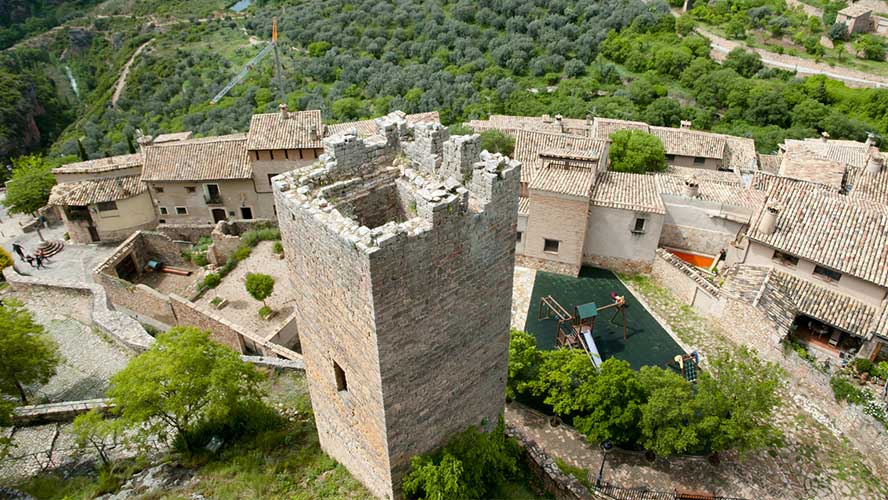
Bierge waterfall
The Bierge waterfall is one of the most frequented areas in Guara Sierra, especially in the summer; such is the case that the access to it in the summer season has been controlled since 2017. The capacity has been limited to 250 people a day and you have to pay 2 euros to access the bathing area.
It is a dam on the river Alcanadre which forms two bathing areas, separated by a waterfall of only 8 metres like an artificial cascade. Until 2016, one of the most popular activities was precisely jumping from the top of the dam to the pool below, but the authorities forbade this because it was dangerous.
The bottom part has many flagstones where the bathers tend to place their towels when spending the day there. The upper pool, with calm shallow waters, is surrounded by a grove where the families who visit the waterfall have picnics.
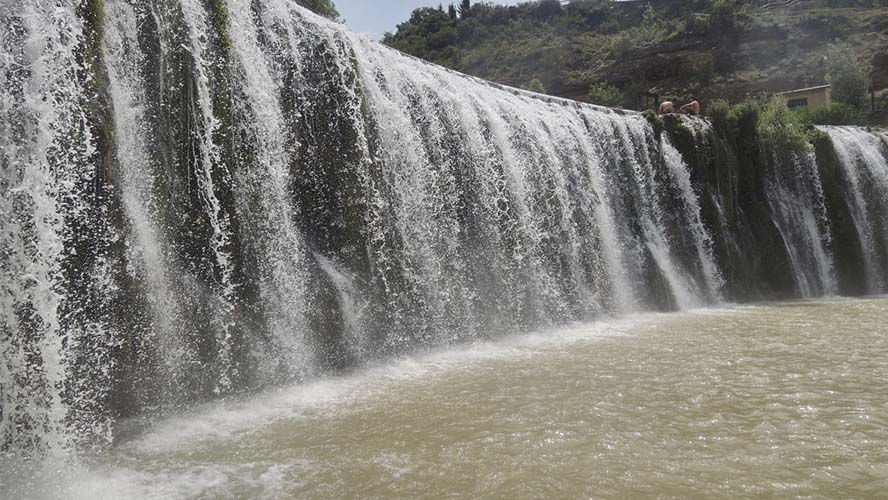
Vadiello reservoir
On the western part of the Guara Sierra and Canyons Nature Reserve, you will find the Vadiello reservoir in a wild and solitary area, surrounded by rocky formations such as the Rocks of San Jorge, Aguja de la Mitra and Pico Borón. The reservoir collects the water from the river Guatizalema and, in the surrounding area, you will find numerous ravines.
The Vadiello reservoir is the starting point for some of the most popular hiking trails in Guara Sierra. From there, you can go by foot to the Chapel of Saint Chinés or take a short hike to observe the numerous birds of prey who inhabit the area. Moreover, near the reservoir you will find the characteristic ‘mallos’, i.e. vertical walls of conglomerates which are ideal for climbing enthusiasts.
Source of the Tamara
The source of the Tamara is one of the most beautiful natural pools in Guara Sierra. Its intense turquoise waters make it nearly impossible to resist the temptation of bathing in it, especially in the summer. However, a word of warning for potential bathers: even in the summer, its waters are very cold.
This natural pool is usually the end of an easy hiking trail for all the family, which starts at the hostel near Bierge waterfall. There are two return options: the easiest one is to retrace your steps; and the most complicated one, and only if you are well equipped, is to continue downhill along the river course, where there are other natural pools.
Medieval bridges in Guara Sierra
With scattered villages and numerous rivers which cut off Guara Sierra, travelling around the area has always been a headache since the Middle Ages. One of the heritage treasures in the sierra are its medieval bridges, most of which are near Alquézar. The main ones are as follows:
- Villacantal bridge: this spans the river Vero near the path that linked Sobrarbe to Barbastro. It is a wide bridge, with a complicated access on both sides, which dates back to the 16th century.
- Fuendebaños bridge: this crosses the source of a spring (‘fuendebaños’ means the source of a bathing area in Spanish). The spring water maintains a relatively warm temperature, even in winter, which is why it was called Fontes Caldas (warm springs) in medieval times. The bridge is also known as Asque bridge since you can reach the village of Asque along the left bank.
- Albarda bridge: this is one of the oldest bridges in the sierra, erected no less than in the 13th century. It was the link between Colungo and the path to Barbastro. It is in a complicated area, where the river Vero flows as a strong torrent, so it is a very solid structure. ‘Albarda’ means a pack saddle in Spanish, which was a saddle to support the load on a pack animal in medieval times.
Hiking trails in Guara Sierra
The Guara Sierra and Canyons Nature Reserve is the hiking Mecca, where the trails are of varying difficulty and help you to explore its secrets and natural heritage. Here are some ideas:
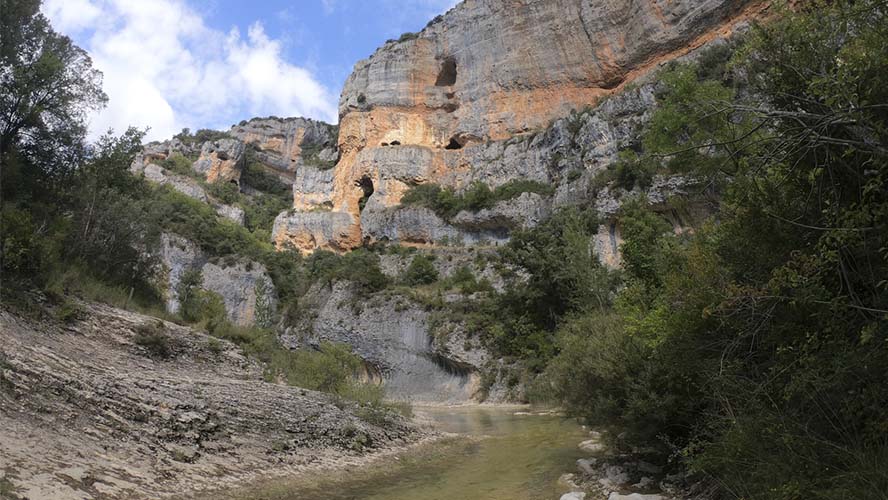
Vero pools (Villacantal-Salto de Alquézar):
This is an easy route for all the family which runs along the river Vero canyon, located below Alquézar. There is a footbridge section so that you can walk around 4.5 kilometres. In the summer, the route is full of canyoneers who descend along the river course.
Rodellar – Lower Mascun:
This is a return hike of around 2.5 hours. Some of the best hiking trails in the nature reserve are around Mascun canyon, so you should explore it in depth.
San Julián gorges:
This is also an easy hike; its proximity to the city of Huesca makes it accessible. The hike to and from is around 1.5 hours, which may take slightly more if you visit Saint Julian’s chapel.
Canyoning and adventure sports in Guara Sierra
Guara Sierra is considered to be one of the top canyoning destinations in Europe. With around 70 ravines throughout the nature reserve, it has something for everyone, although most of them are easy and suitable for beginners. Here are some of the best examples:
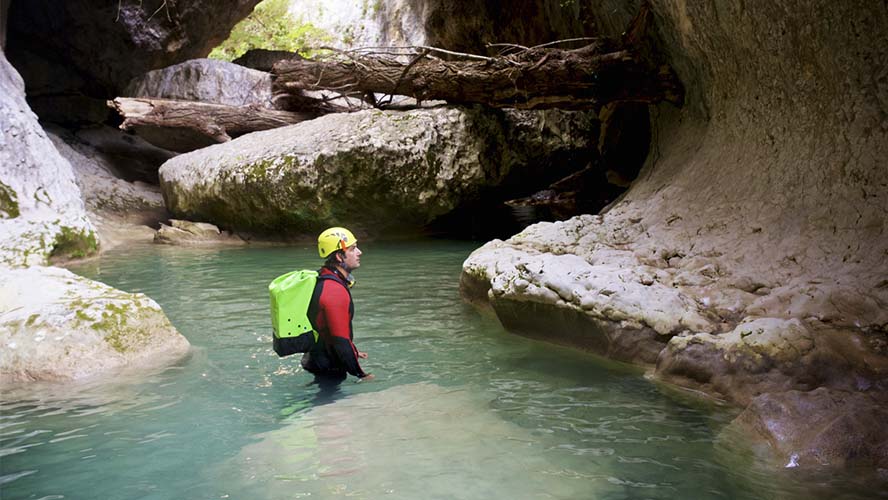
Upper Mascun ravine:
This is probably the most famous one in Guara Sierra but also one of the most demanding. It takes two hours just to get there, and the descent itself will take a further six hours. There are waterfalls and abseiling sections, with a spectacular landscape throughout the descent.
Vero canyon:
The canyon that runs along the Vero river is much easier. It has six kilometres where you will descend through marvellous rocky labyrinths, always with the river’s crystal clear waters.
Peonera ravine:
This is probably the most popular ravine among beginners. The first part includes the Fornazos Straits, which are polished rock formations eroded by the water. There are many water sections in the ravine, so fun is guaranteed.
Apart from canyoning itself, Guara Sierra is also suitable for enjoying the via ferrata, i.e. a climbing route that employs steel cables. The nature reserve has very well-known via ferratas such as Peñas Juntas and Palomo canal. And, of course, rafting is very popular in the summer, especially along the rivers Ésera and Gállego.
How to get to Guara Sierra
As we already said, Alquézar is the best starting point to explore the Guara Sierra and Canyons Nature Reserve. The best way to get there is by car. If you are travelling from the east, i.e. from Lleida or Barcelona, you must first get to Barbastro and then take the A-1232 road.
If you are travelling from the west, i.e. from Huesca, Zaragoza or Madrid, you must take the A-22 road and then the exit to Abiego-Alquézar, through the A-1229.




































































